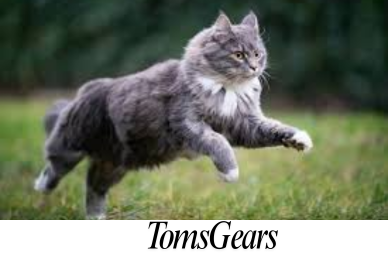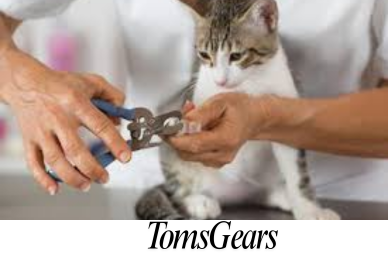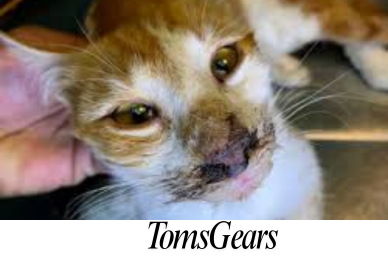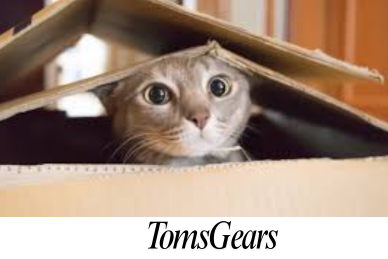How to Prevent Litter Box Tracking: A Cat Owners’ Guide
Litter tracking is a common annoyance for many cat owners, as tiny bits of litter tend to get scattered across floors and carpets, leading to mess and frequent cleanup. This guide provides practical solutions to help reduce or even eliminate litter box tracking, with tips ranging from choosing the right litter to maintaining a regular cleaning routine. By following these steps, you can make your home cleaner and more comfortable without constantly chasing after scattered litter.
Why Litter Tracking Happens
Litter tracking happens mainly because litter tends to stick to cats’ paws and fur, especially if they dig and kick during their routine. Fine particles can be picked up by paws and easily carried outside the box, especially with types like clay or silica litter. Dusty particles can also quickly spread to nearby surfaces, exacerbating the problem. Cats’ natural behavior, the type of litter, and even the design of the litter box all contribute to this issue.
With that being said, let’s now discuss how you can prevent litter box tracking in your cat:
1. Choose the Right Cat Litter
The type of litter you select has a big impact on tracking. Some litter types are naturally better at reducing tracking due to particle size, dust level, and weight. Here’s how you can choose the best litter type for a cleaner home:
- Pellet-Based Litter: Pellets are larger and heavier, making it harder for cats to track them around. They also produce minimal dust, which helps with indoor air quality.
- Example Products: ARM & HAMMER™ Feline Pine Original, ökocat Less Mess Natural Wood Clumping.
- Low-Dust Clumping Litter: Clumping litters with larger particles are excellent for low tracking because they don’t easily stick to paws. Look for low-dust options to keep tracking down.
- Example Product: ARM & HAMMER™ Double Duty Clumping Cat Litter.
- Dust-Free Litters: For cats with sensitive respiratory systems or allergies, dust-free options like wood or paper-based litter can help. These litters often use natural materials and are effective at reducing tracking.
- Example Products: ökocat Original Natural Wood Clumping Litter, ökocat Dust-Free Natural Paper Litter.
Litter Types to Avoid: Certain litter types tend to make tracking worse, so it’s best to steer clear of clay litter and silica litter. Clay litters have fine, dusty particles that easily cling to paws and scatter around the house. Similarly, silica litter particles are light and fine, making them prone to tracking.
2. Choose the Right Litter Box
The litter box design plays an essential role in minimizing litter tracking. Selecting a box with a design that limits litter scatter can help significantly. Here are some optimal options:
- Covered Litter Boxes: Covered boxes help keep litter contained and prevent it from being kicked outside. However, keep in mind that some cats may find covered boxes uncomfortable due to confinement or odor buildup.
- Top-Entry Litter Boxes: These boxes feature a high entry point, which makes it harder for litter to get out. Top-entry boxes are ideal for cats that don’t mind jumping but may not be suitable for elderly or arthritic cats.
- High-Sided and Larger Boxes: Boxes with high sides keep litter from being kicked over the edge. Additionally, having a larger box with extra space allows your cat to move around more freely without scattering litter outside the box.
Size and Placement: The litter box should ideally be at least as long as your cat from nose to tail for comfort and cleanliness. Place the box on a hard, non-carpeted floor in a low-traffic area of your home, which helps reduce litter tracking on high-traffic surfaces. Carpeted areas tend to hold litter particles, making them harder to clean.
3. Use Litter Mats
Litter mats are specifically designed to capture litter particles that might stick to your cat’s paws, making them an effective solution for minimizing tracking. Mats come in a variety of materials and designs that work to trap litter right at the box entrance.
- Specialized Mats: Mats made of materials like silicone, PVC, or honeycomb-patterned fabrics are highly effective in catching litter. Silicone and PVC options are durable and easy to clean.
- DIY Options: Simple options like old towels, carpet remnants, or bath mats can also work as litter mats. These materials are less effective than specialized mats but can still help to some extent.
Place the mat directly in front of the litter box’s entrance. Larger mats tend to be more effective as they cover a wider area, reducing the chance that litter will get past the mat. Regularly shake, vacuum, or wash the mat to keep it clean and functional.
4. Do Regular Cleaning and Maintenance
Consistent cleaning practices are key to keeping litter tracking under control. Here are some maintenance routines that can help:
- Daily Scooping: Removing waste daily from the litter box minimizes odor and keeps the litter area more sanitary, which can reduce the amount of litter that clings to paws.
- Frequent Sweeping and Vacuuming: Regularly sweeping or vacuuming the area around the litter box helps to keep loose particles from spreading further. A handheld vacuum can make this task quick and efficient.
- Weekly Litter Change and Box Cleaning: Once a week, change out the litter entirely and clean the litter box with soap and water. This ensures that dust and dirt buildup inside the box doesn’t contribute to tracking.
For certain types of litter like wood pellets, consider using a sifting litter box, which helps separate sawdust from clean pellets, keeping the box tidier overall.
Grooming Tips to Reduce Tracking
Cats with long fur around their paws are more prone to litter tracking. To reduce this, regularly trim the fur around long-haired cats’ paws, ensuring that they won’t pick up as much litter as they exit the box. In addition, inspect your cat’s paws frequently to remove any trapped litter or debris.
Tips for Multi-Cat Households
For homes with multiple cats, consider having a separate litter box for each cat. This reduces crowding, keeps each box cleaner, and minimizes the overall amount of litter tracked. A larger mat and larger litter boxes can help to accommodate the needs of multiple cats and reduce mess.
Summary
Litter tracking doesn’t have to be an unmanageable problem. By choosing the right type of litter, selecting a suitable litter box design, using an effective litter mat, and keeping up with regular cleaning routines, you can significantly reduce the amount of litter spread throughout your home. Experiment with different solutions to find the combination that works best for you and your cat.
FAQs
What type of litter is best to prevent tracking?
Low-tracking litters like pellet-based, low-dust clumping, or dust-free natural litters work best to reduce tracking.
Are covered litter boxes effective for preventing tracking?
Yes, covered litter boxes help contain litter within the box, though some cats may dislike the odor or confined space.
How often should I clean around the litter box?
Daily scooping, weekly litter changes, and regular sweeping or vacuuming around the box can help minimize litter tracking.
What’s the ideal placement for a litter box to reduce tracking?
Place the litter box in a low-traffic, hard-floor area. Avoid carpeted areas, as litter tends to stick to carpet fibers.






